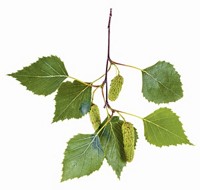Advertisement
Grab your lab coat. Let's get started
Welcome!
Welcome!
Create an account below to get 6 C&EN articles per month, receive newsletters and more - all free.
It seems this is your first time logging in online. Please enter the following information to continue.
As an ACS member you automatically get access to this site. All we need is few more details to create your reading experience.
Not you? Sign in with a different account.
Not you? Sign in with a different account.
ERROR 1
ERROR 1
ERROR 2
ERROR 2
ERROR 2
ERROR 2
ERROR 2
Password and Confirm password must match.
If you have an ACS member number, please enter it here so we can link this account to your membership. (optional)
ERROR 2
ACS values your privacy. By submitting your information, you are gaining access to C&EN and subscribing to our weekly newsletter. We use the information you provide to make your reading experience better, and we will never sell your data to third party members.
Environment
Particulates From Coal Mining Community Trigger Signs Of Cancer In Lung Cells
Environmental Health: Human lung cells exposed to particulates from homes near mountaintop removal mining sites show cancerlike properties and promote tumors in mice
by Deirdre Lockwood
November 3, 2014
To expose and extract coal seams buried deep under mountains, miners blast through rock with explosives in a method called mountaintop removal mining. In Appalachia where such mining is widespread, people who live or work near mines have a greater incidence of lung cancer than the general population. Scientists have hypothesized that exposure to dust from mountaintop removal mining can cause cancer, but until now, they haven’t demonstrated the link experimentally.
Now, a team of researchers has shown that human lung cells exposed to airborne dust from homes within a mile of a mountaintop removal mining site adopt cancerlike properties and, when implanted in mice, can promote tumors in mice (Environ. Sci. Technol. 2014, DOI: 10.1021/es504263u).
Sudjit Luanpitpong and Yon Rojanasakul, cancer researchers at West Virginia University, and their colleagues collected air samples on 5-μm mesh filters over several weeks from two West Virginia homes within a mile of an active mountaintop removal mining site. They also collected samples from homes in a rural part of the state where there is no mining activity. They extracted the particulates from the filters and then analyzed their composition using scanning electron microscopy with energy-dispersive X-ray spectroscopy.
The researchers then exposed cultured human lung cells to a nonlethal dose, 1 μg/mL, of the particulates from either a mining site or a nonmining one for three months. By comparing the exposed surface area of the lung cells to that of human lungs, they estimate that this dose is equivalent to eight to nine years of human exposure to average air concentrations of particulates in these areas.
Cells exposed to particulates from near the mine adopted cancerlike properties: They formed colonies when grown on soft agar, a common test of transformation into cancer cells. These cells also grew faster and migrated farther. In contrast, cells treated with particulates from nonmining areas did not show these characteristics.
The team also investigated why mining dust might cause this transformation. They exposed cells to silica and molybdenum, the two main inorganic components of these particulates. Adding molybdenum trioxide, a suspected carcinogen, caused the cells to adopt cancerlike properties. But to the team’s surprise, silica, a known carcinogen, had no or minimal effect.
To test whether these cells could cause tumor formation, the team injected mice with cells from the earlier experiments. None of the cells initiated tumor formation in mice. So to see if the cells might promote the growth of existing tumors, they injected the cells from each treatment into mice together with lung cancer cells. In this case, the cells that had been treated with particulates from mining areas or with molybdenum promoted three to four times as much tumor growth as cells treated with particulates from the nonmining sites.
“Exposure to these particles may not induce cancer,” says Rojanasakul, but may enhance the effect of other carcinogens, such as those in cigarette smoke.
Regina M. Santella, an environmental health researcher at Columbia University, says the study is valuable because it demonstrates cancer-promoting effects with samples collected from areas where people are being exposed to dust from mining activities. “It shows that higher exposure to these particulates is potentially a risk,” she says. An important next step, she adds, would be to test the particulates in an inhalation study in animals to gauge the cancer risk they pose.






Join the conversation
Contact the reporter
Submit a Letter to the Editor for publication
Engage with us on Twitter